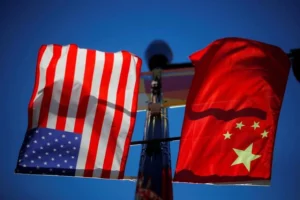Last year, the US outpaced China with a 6.3% GDP growth, showcasing strong consumer spending and a quick recovery from the pandemic.
This achievement surprised many, including Cornell University’s Eswar Prasad, who highlighted the US’s economic resilience and China’s facing hurdles.
Despite expectations of a US recession due to interest rate hikes, the American economy showed a real growth rate of 3.3% in the last quarter, dispelling recession fears.
Meanwhile, China grappled with a real estate downturn and deflation, affecting exports and youth employment, despite meeting its growth target.
The narrative around the US-China economic rivalry reveals a complex scenario.
The US’s nominal GDP growth and consumer-driven recovery contrast with China’s struggles, including a housing crisis and policy-induced challenges under President Xi Jinping.
However, this account also acknowledges the need for a balanced view, recognizing China’s long-term growth strategies and the US’s challenges like high public debt and potential inflation.

Josh Lipsky and Adam Posen highlight China’s structural issues, labeled “economic long COVID” by Posen, revealing a lack of vitality.
Yet, the US must navigate its own economic risks, including a significant budget deficit.
The global economic Cornell University shapes global competition, fostering innovation and sustainable growth through trade policies and international relations.
This concise overview underscores the dynamic economic competition between the US and China, highlighting their respective strengths and challenges.
It points towards the importance of both nations adapting to global changes and internal policies to ensure future economic leadership.

